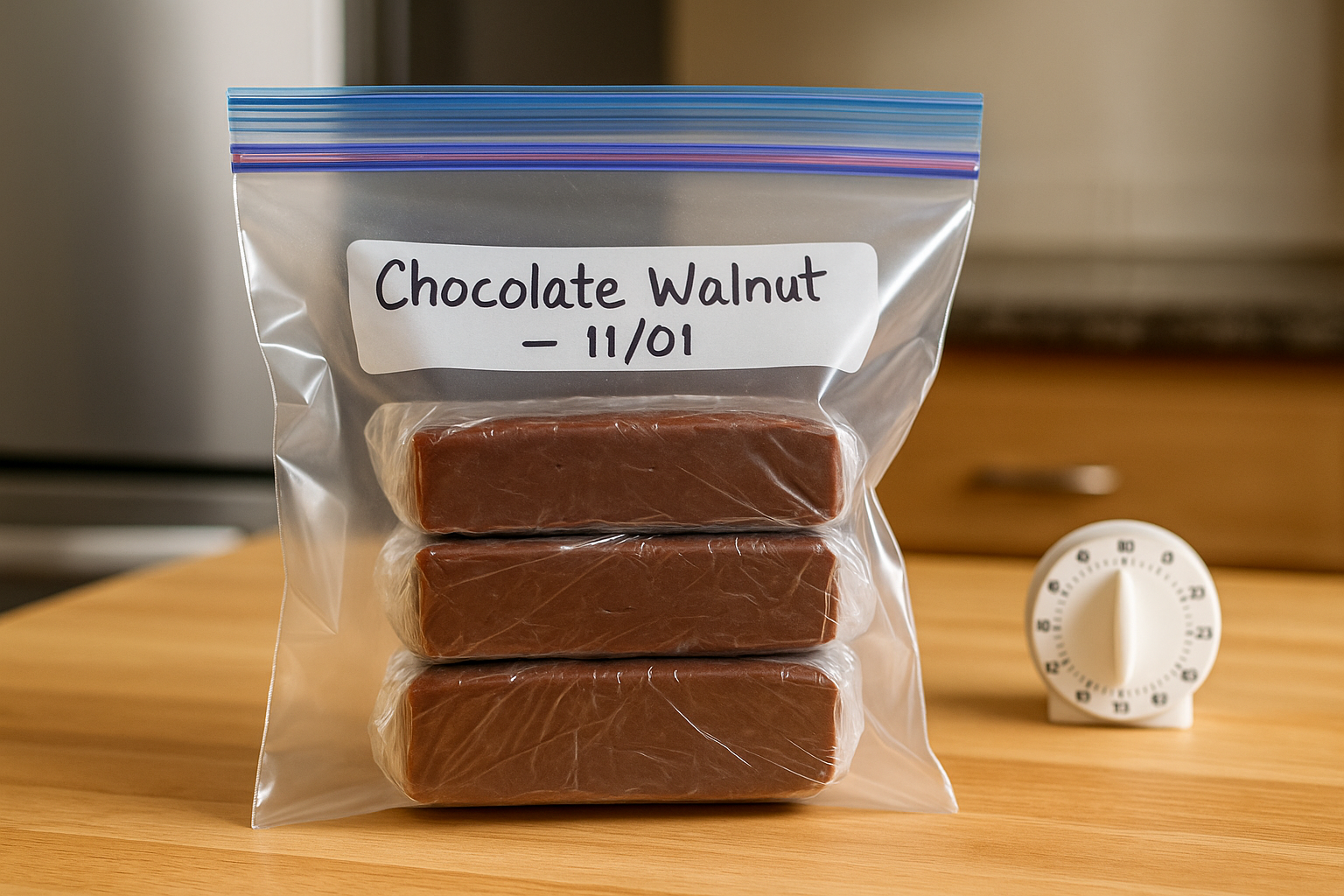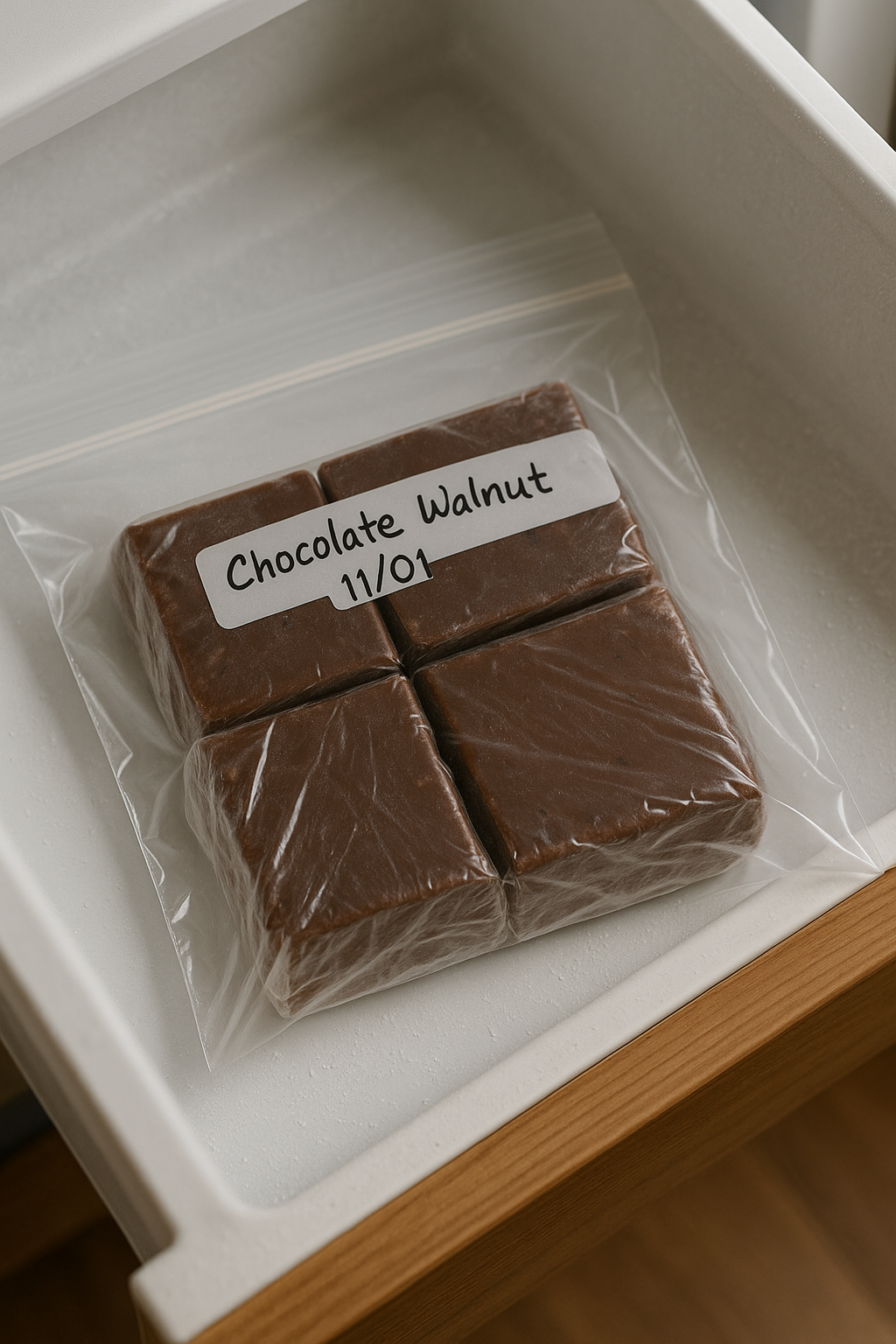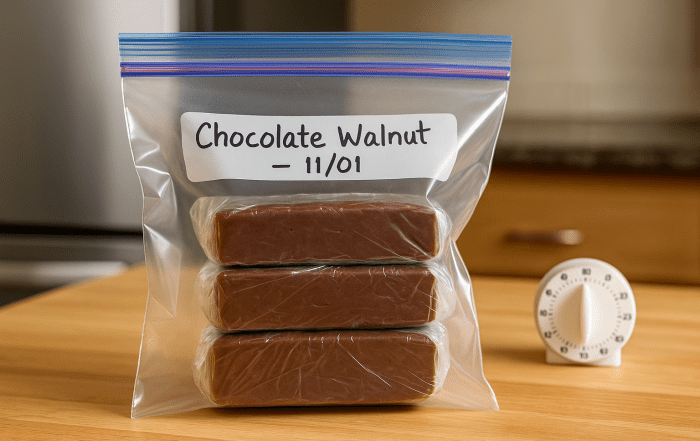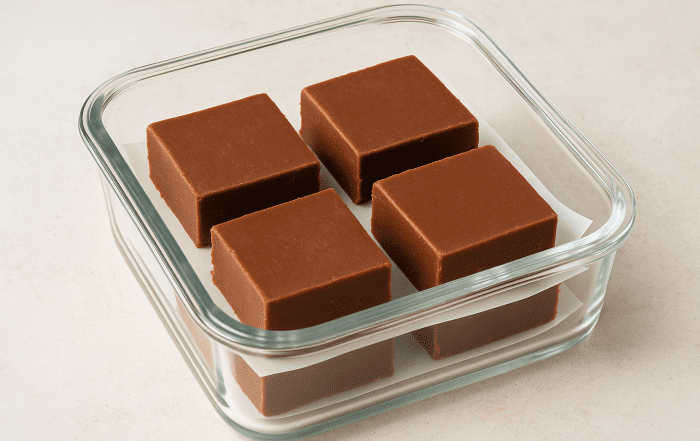
Latest Blogs
Quick answer
Yes. Portion fudge, double‑wrap it airtight, and freeze flat. For best quality, enjoy within 3 months. To thaw without condensation: keep it sealed while it warms—fridge overnight, then room temp 1–2 hours, unwrap last.
Why freezing fudge works (in plain English)
Classic fudge is high in sugar and relatively low in “free” water, so freezing mainly preserves texture and flavor rather than “making it safe.” Freezing slows microbial and chemical changes; it doesn’t sterilize. Quality depends on wrapping, air exposure, and thawing technique. That’s why the steps below matter.
This guide will answer the question: Can You Freeze Fudge? Discover tips and techniques for successful freezing. You’ll find that understanding how to properly store fudge enhances its flavor and texture, making the experience even better.
Many people ask, Can You Freeze Fudge? Freezing is a great way to extend the life of your delicious fudge.
The best way to freeze fudge (step‑by‑step)
- Portion into blocks you’ll eat within a week (smaller blocks = faster thaw, fewer re‑freezes).
- Wrap tightly in plastic wrap, smoothing out air pockets.
- Secondary barrier: slide wrapped blocks into a freezer‑grade zip bag or vacuum‑seal (gentle setting).
- Label & date (flavor + freeze date).
- Freeze flat in a single layer; don’t stack heavy items on top.
Best‑within timeframe: For peak texture and flavor, keep frozen storage to up to 3 months. Longer won’t “spoil” it, but quality drops over time.
Remember, if you’re wondering, Can You Freeze Fudge, the answer is definitely yes!
Thawing for perfect texture (no condensation)
- Move the sealed package to the refrigerator overnight.
- Then let it sit at room temperature 1–2 hours—still sealed.
- Unwrap last. This prevents moisture beading on the surface as temperatures equalize.
Does freezing change texture?
A well‑wrapped, classic fudge (sugar + dairy + fat) holds up beautifully. Add‑ins can change that:
- Nuts freeze fine; if they’re only sprinkled on top, some may shed.
- Marshmallows are best mixed in, not sprinkled on top.
- Cream‑cheese swirls or fresh fruit are more moisture‑sensitive—freeze, but aim to enjoy within 2–3 months.
Room‑temp & fridge reference (for context)
For those who love fudge, the question always arises: Can You Freeze Fudge? The answer is a resounding yes!
- Room temp: cool, dark, airtight; generally 1–2 weeks.
- Refrigerator: well‑wrapped to prevent drying/odors; 2–4 weeks. (Choose fridge if your kitchen is warm or humid.)

Troubleshooting
- Dry/crumbly after thaw: let it rest wrapped at room temp 30–60 min.
- Too soft to slice: chill 30–60 min before cutting.
- Avoid refreezing once fully thawed; repeated freeze‑thaw cycles can degrade texture.
Special cases
One of the most common questions is, Can You Freeze Fudge? The process is simple and effective.
- Peanut butter / nutty fudge: freeze normally; airtight is crucial (nuts can go stale if exposed).
- Cream‑cheese or perishable swirls: freeze promptly and enjoy within 2–3 months for best texture.
- Vegan/dairy‑free fudge: generally follows the same rules as classic fudge.
From our kitchen
Arndt’s Fudgery has been crafting fudge in Newton, Illinois for decades, with 75+ flavors made fresh. If you’re freezing our fudge, the steps above are exactly how we prep seasonal inventory, too.
FAQs (on‑page content)
In this guide, we address the question: Can You Freeze Fudge? It’s an essential skill for fudge lovers.
Can you freeze fudge in the pan as one slab?
Yes, but smaller blocks thaw more evenly and reduce repeated thawing. Wrap the slab tightly, then bag or vacuum‑seal for air removal.
How long does frozen fudge last?
For best quality, up to 3 months. It may keep longer but with diminishing texture. Southern Living+1
Do I need to pre‑cut fudge before freezing?
Pre‑cut looks convenient; un‑cut blocks retain moisture longer. Cut just before serving.
How do I thaw quickly without getting sticky edges?
Keep it sealed through the fridge‑to‑room‑temp transition; unwrap last to avoid surface condensation. Southern Living
If you’re curious, Can You Freeze Fudge? Yes, it’s a fantastic way to store leftovers!
Should I refrigerate fudge instead of freezing it?
Room temp is fine for 1–2 weeks if your kitchen is cool; choose the fridge in warm/humid climates or if your recipe includes perishable mix‑ins.
Ultimately, the answer to Can You Freeze Fudge is yes, and it can help maintain its quality.







